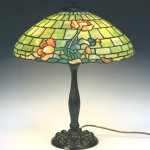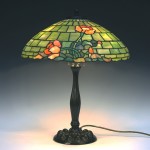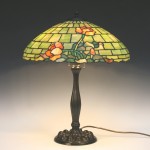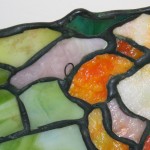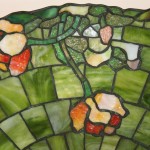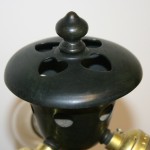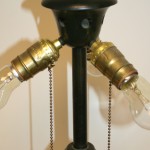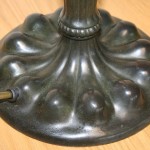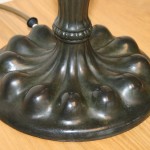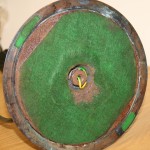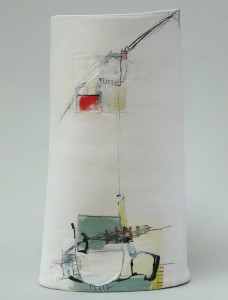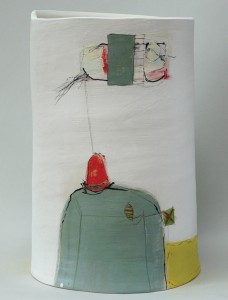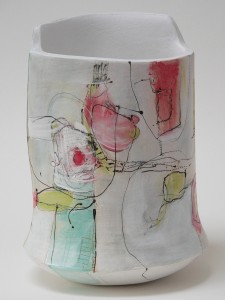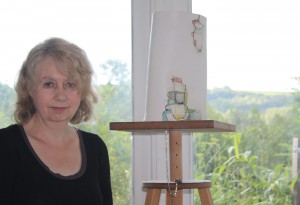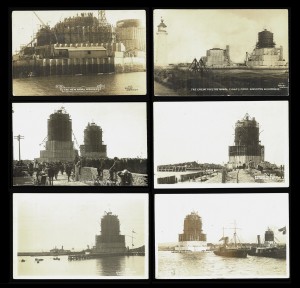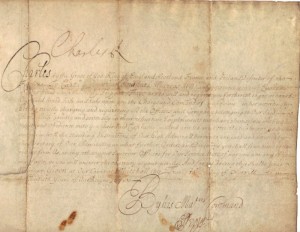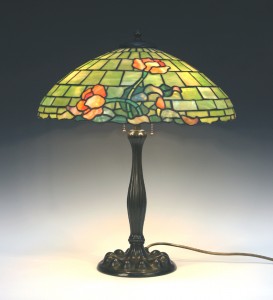
ADVANCE NOTICE: To be offered as part of our three-day auction of Antiques, Fine Art & Collectors’ Items on the 1st December 2011 in our sale of British and Continental Ceramics and Glass. As part of an important group of American Art Nouveau lamps consigned for sale by a lady. A leaded glass and patinated metal table lamp, attributed to Duffner & Kimberly, circa 1910, the domed shade with three groups of orange poppy flowers against a ground of ‘brickwork’ green panels, the dark green/black patinated base with a swollen reeded stem and spreading circular foot with twelve lobed protrusions, diameter of shade approx 48cm, height of base approx 59cm, unmarked. Provenance: Christie’s New York, Rockefeller Plaza, Important Tiffany & Art Glass from the Minna Rosenblatt Gallery, 10 December 2003, lot 382. Presale estimate £3,000-£5,000.
